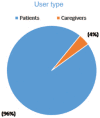Using social media in safety signal management: is it reliable?
- PMID: 30283627
- PMCID: PMC6166319
- DOI: 10.1177/2042098618789596
Using social media in safety signal management: is it reliable?
Abstract
Social media use is growing globally, with a reported 3 billion active users in 2017. This medium is used increasingly in a health setting by patients (and to a limited extent, healthcare professionals) to share experiences and ask advice on medical conditions as well as pharmaceutical products. In recent years, attention has turned to this huge, generally untapped, source of potential health information as a possible tool for pharmacovigilance, and in particular signal detection. In this article we explore some of the challenges of utilizing social media for safety signal detection and look at some of the pilot studies conducted to date in order to weigh the evidence for and against the utility of social media data in safety signal detection. After doing so we can conclude that the analysis of social media datasets has demonstrated a limited contribution to the signal detection and signal management process. The data available in social media can complement blind spots in traditional pharmacovigilance datasets and provide significant value for targeted investigations and studies such as those relating to abuse, misuse, use in pregnancy, and patient sentiments.
Keywords: internet; pharmacovigilance; signal detection; signal management; social media.
Conflict of interest statement
Conflict of interest statement: Sue Rees is an employee of Amgen Ltd and Sadiqa Mian and Neal Grabowski are employees of Amgen Inc. All authors hold stock in Amgen Inc.
Figures






References
-
- Almenoff J, Tonning JM, Gould AL, et al. Perspectives on the use of data mining in pharmaco-vigilance. Drug Safety 2005; 28: 981–1007. - PubMed
-
- Dictionary OEL. https://en.oxforddictionaries.com/definition/social_media
-
- Social WA. Three billion people are now using social media, Hootesuite, 2017. https://wearesocial.com/uk/blog/2017/08/three-billion-people-now-use-soc....
Publication types
LinkOut - more resources
Full Text Sources

